Understanding the factors that affect precious metals prices is key. The US has recently imposed tariffs, causing big changes in these markets.
Gold and silver prices have seen big swings. Investors are unsure about what 2025 holds. The link between tariffs and precious metals prices is complex. Knowing this is vital for smart investing.
To make the most of your investments, you must stay updated. This article explores how tariffs impact precious metals prices. It aims to help you make better investment choices.
Key Takeaways
- Tariffs can significantly affect precious metals prices.
- Understanding this dynamic is crucial for investors.
- Recent US tariffs have led to market volatility.
- Gold and silver prices have fluctuated sharply.
- Staying informed is key to maximizing returns.
Understanding the Global Tariff Landscape in 2025
In 2025, the global tariff landscape is complex and affects precious metals prices. It’s important to grasp the details of tariff policies and their wide-reaching effects.
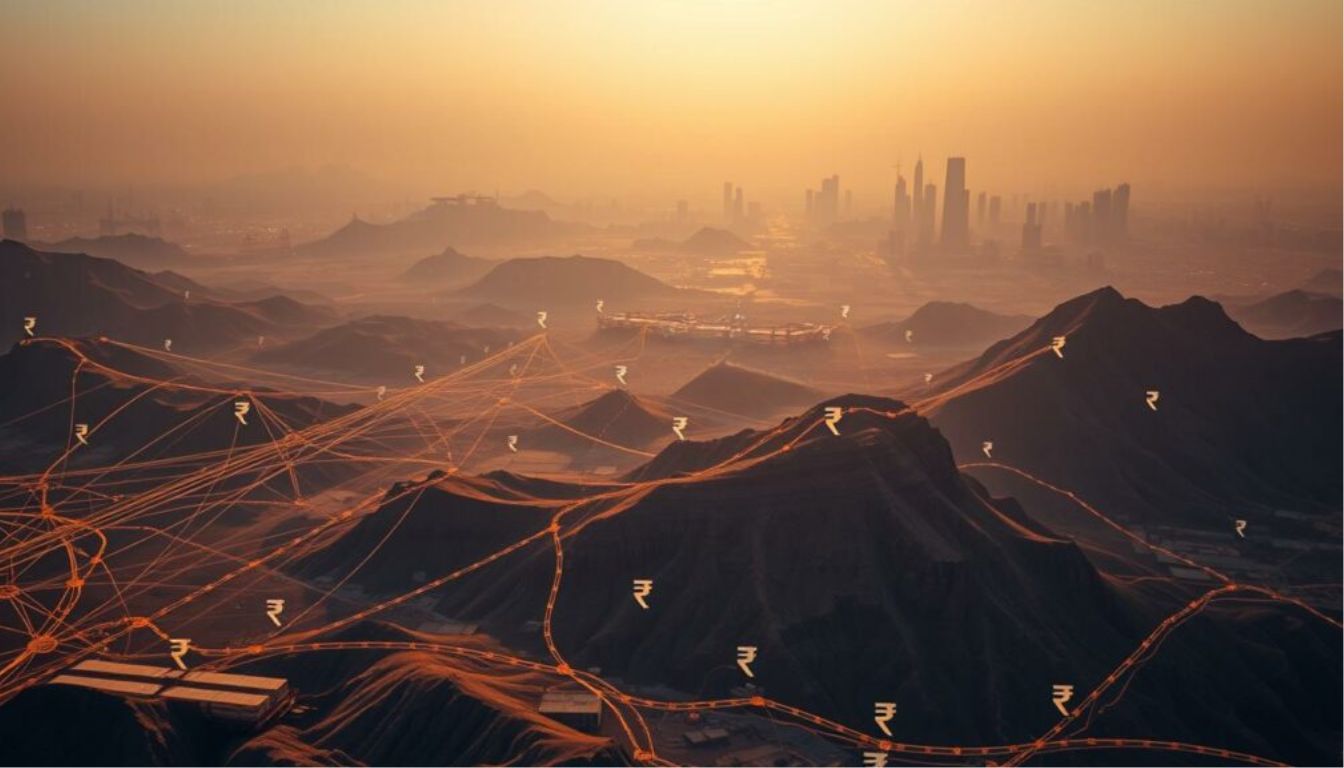

Current Trade Tensions Between Major Economies
Trade tensions between big economies, like the US and China, shape the global tariff scene. These tensions have led to tariffs and countermeasures. This has a big impact on many markets.
US-China Relations and Their Global Implications
The US-China trade war has been going on, with both sides hitting each other with tariffs. This has hurt trade between them and has global implications. It affects prices of commodities, including precious metals.
The uncertainty in these trade relations keeps affecting markets. It’s key for investors to keep up with these changes.
As things change, the impact of tariffs on precious metals prices is a big focus. Knowing about these changes can help you make better choices in the precious metals market.
The Fundamental Relationship Between Tariffs and Precious Metals
The link between tariffs and precious metals is complex. It’s key to grasp this to do well in the precious metals market, especially when trade is uncertain. Tariffs, or taxes on imports, can change the global supply chain and demand for precious metals.
Tariffs can make importing precious metals more expensive. This might lower demand in countries with high tariffs. On the other hand, countries with lower tariffs might see more demand. This can cause price swings, so it’s vital to keep up with tariff news.
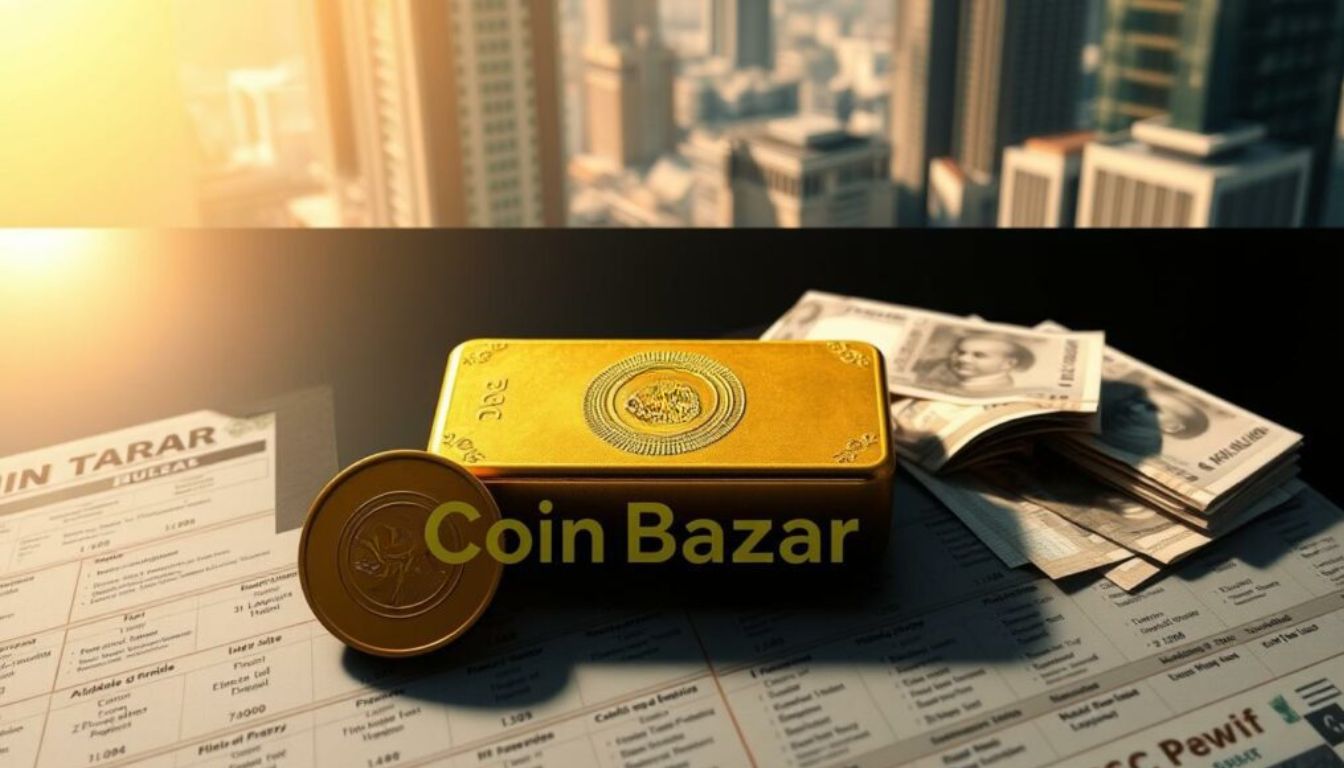

How Trade Restrictions Influence Commodity Pricing
Trade restrictions, like tariffs, can change how we price commodities. For metals like gold, silver, platinum, and palladium, these changes can cause big price shifts. Tariffs on metals can make imports pricier, which might cut demand and prices.
The effects of trade restrictions can spread far. For example, tariffs on precious metals can raise production costs for industries like jewelry or cars. This can lead to higher prices for buyers and slower economic growth.
| Metal | Pre-Tariff Price | Post-Tariff Price | Change |
|---|---|---|---|
| Gold | $1,500 | $1,600 | +6.67% |
| Silver | $20 | $22 | +10% |
| Platinum | $900 | $950 | +5.56% |
It’s important for investors to understand these market dynamics in a tariff-driven economy. Keeping up with trade policies and their effects can help you make better investment choices.
The Direct Impact of Tariffs on Precious Metals Prices
Tariffs can cause big price swings in precious metals. This shows how trade changes affect the market. It’s important to understand this to deal with the global trade world.
Short-term Price Volatility Following Tariff Announcements
Tariff news can lead to quick price changes in precious metals. For example, silver prices jumped to $35/oz then fell to $28/oz because of US-China tariff news. This volatility comes from investors’ fast reactions to trade policy changes.
These announcements have big effects:
- Prices quickly change because of investor reactions
- Market feelings shift because of trade policy views
- Arbitrage chances come up because of price gaps
Tariffs can also change the balance of supply and demand for precious metals. They can make some markets more or less appealing. For example, higher import duties on gold in India might lower demand, affecting prices worldwide. But, lower tariffs could boost demand and raise prices.
The supply-demand equilibrium is key to precious metal prices. Tariffs change this balance, causing price adjustments. It’s crucial for investors to grasp these changes to make the most of market shifts.
Important factors affecting supply-demand balance include:
- How import duties affect demand
- Trade policy changes in global supply chains
- Investor actions after tariff news
Gold Market Outlook Under New Tariff Regimes
New tariff rules are changing the gold market in 2025. They bring both challenges and chances for investors. It’s key to know how tariffs affect gold prices.
Tariff policy changes have many effects on the gold market. Import duty changes can greatly impact gold prices. For example, lower import duties can make gold cheaper, which is a good time to invest.
Import Duty Changes and Their Effect on Gold Prices
Import duty changes are key in setting gold prices in the home market. Lower duties mean cheaper gold for buyers. But, higher duties can make gold pricier, which might lower demand.
In India, gold import duties directly influence domestic prices. The country has a certain duty on gold imports, affecting what buyers pay. Knowing these duties is vital for investors aiming to profit from price changes.
For instance, if gold import duty drops, prices will fall, making it a good time to buy. But, if duties rise, prices will go up, changing your investment plans.
When investing in gold in 2025, watch tariff policy changes closely. This knowledge helps you make better choices and handle the gold market’s new rules.
Silver Market Dynamics in Response to 2025 Tariff Policies
The silver market will react to 2025 tariff policies in complex ways. It serves as both a precious metal and an industrial commodity. This means we must look at its appeal for investment and its uses in industry.
Tariffs on silver or silver products can change its price and demand. This affects industries that use silver, like electronics and renewable energy. It’s important to see how tariffs might raise production costs.
Industrial Demand Shifts Due to Trade Restrictions
Trade restrictions can change how industries use silver. For example, tariffs on silver imports can raise costs. This might lead to less production or a switch to other materials.
It’s key to watch how tariffs affect silver’s supply chain and price. The demand for silver in industries like photovoltaics and electronics could drop a lot.
Silver ETFs and Physical Holdings in India
In India, Silver ETFs and physical silver are important. Tariffs can change how investors act. This might make Silver ETFs seem safer and more appealing than physical silver.
For investors in India, knowing about tariff impacts on silver is vital. Diversifying investments can help protect against risks from trade policies and silver price changes.
The response of silver ETFs and physical silver to tariffs depends on investor feelings. As trade policies change, keeping up with these shifts is key for smart investing.
Platinum and Palladium: Navigating Automotive Tariffs
Tariffs on cars are changing the game for platinum and palladium. These metals are key in making catalytic converters. It’s vital for investors and the industry to grasp how tariffs affect these metals.
Impact on Catalytic Converter Production and Pricing
Tariffs on cars raise the cost of making vehicles. This affects the need for platinum and palladium in converters. Converters help cut down on car emissions, needing lots of these metals.
Higher tariffs mean higher costs for making converters. This might lower demand for platinum and palladium at first. But, makers might find ways to deal with tariffs over time.
India’s car industry is booming. It’s driven by more people wanting cars and government support. Tariffs on platinum and palladium could really affect this growth.
| Metal | Primary Use | Tariff Impact |
|---|---|---|
| Platinum | Catalytic Converters | Potential increase in production costs |
| Palladium | Catalytic Converters | Potential reduction in demand due to higher costs |
Understanding the economic consequences of tariffs on platinum and palladium is key. The changing tariff scene brings both hurdles and chances for investors and the industry.
India’s Precious Metals Market Under New Tariff Structures
New tariff structures are changing India’s precious metals market. They affect government money and how people buy precious metals. It’s important to know these changes for those in the precious metals business.
Changes to India’s Gold and Silver Import Duties
The Indian government has updated the import duties on gold and silver. These updates will greatly affect the precious metals market. They are part of a bigger plan to control the trade deficit and make more money.
Key changes include:
- An increase in the import duty on gold to curb imports and reduce the trade deficit.
- A revision in the silver import duty to manage the demand and supply dynamics.
Government Revenue Considerations vs. Consumer Impact
The changes in import duties have two sides. They are expected to increase government revenue by collecting more duties. But, they could also make precious metals more expensive for buyers, which might lower demand.
The trade-off between government revenue and consumer impact is a delicate balance. Policymakers need to weigh the tariff implications on the economy and the precious metals market. They should think about:
- How much people want gold and silver when prices go up.
- The risk of smuggling and black markets if duties are too high.
- The effect on jewelry makers and other businesses that use imported precious metals.
Understanding these factors helps everyone in India’s precious metals market deal with the new tariffs.
Investment Strategies for Indian Investors in a High-Tariff Environment
Indian investors face a new challenge with tariffs affecting global trade. The current trade scene, with changing tariffs and tensions, calls for a fresh look at investment plans.
“Diversifying and understanding the impact of import duties on precious metals is crucial,” advises a top financial expert.
Portfolio Diversification Approaches Using Precious Metals
Adding precious metals to your portfolio can be smart. Gold, silver, platinum, and palladium often move differently than other investments. This can help lower your risk.
Precious metals can protect against inflation and currency changes. They’re a good choice when the economy is shaky.
How much to invest in precious metals depends on your risk level. Those who play it safe might put 5-10% in precious metals. More daring investors could go up to 20%.
- A conservative investor might allocate 5-10% to precious metals.
- An aggressive investor could consider 15-20% allocation.
Before investing, think about your financial goals and how much risk you can take. Talking to a financial advisor can help tailor advice to your situation.
With the right investment strategy, Indian investors can tackle the high-tariff world. They might even find chances to profit from market ups and downs.
Digital Gold and Silver: Alternative Investment Options Amid Tariff Uncertainty
With tariff policies causing uncertainty, digital gold and silver are becoming popular choices for investors. The effects of tariff policy effects on traditional investments have made digital precious metals more appealing.
Digital gold and silver platforms provide a safe and easy way to invest in precious metals. You don’t need to store them physically. In India, these platforms are growing fast, thanks to more people looking for different investment options.
Growth of Digital Precious Metal Platforms in India
In India, digital precious metal platforms are growing fast. They offer features like easy buying and selling, digital storage, and the ability to invest in small amounts. This makes it easier for more people to add precious metals to their portfolios.
For Indian investors, it’s key to understand how trade protectionism impact their investments. They need to know about the taxes on digital gold and silver. Selling these metals can lead to capital gains tax.
Investors should talk to tax experts to learn about the tax rules for digital precious metals. This way, they can make smart choices and adjust their strategies as tariff policies change.
The Ripple Effect: How Precious Metal Tariffs Impact Other Asset Classes
Tariffs on precious metals have far-reaching effects. They impact not just the commodities market but also currency markets and other financial tools. It’s vital to grasp these effects to make smart investment choices.
The influence of precious metal tariffs goes beyond the commodities market. It touches currency markets and other financial instruments. This section will delve into how these tariffs affect your investment portfolio.
Correlations with Currency Markets and the Indian Rupee
The value of the Indian Rupee can change due to precious metal tariffs. When tariffs rise, the US dollar gets stronger against the Rupee. This makes imports pricier, affecting the economy and your investments.
Some key points to consider:
- The correlation between precious metal prices and currency fluctuations
- How tariff changes can influence foreign exchange rates
- The potential impact on your investments denominated in foreign currencies
India’s Sovereign Gold Bond Program is also influenced by precious metal tariffs. Tariff-induced gold price changes can make these bonds less appealing. As an investor, knowing how tariffs affect gold prices is key to smart investment decisions in these bonds.
Key considerations for the Sovereign Gold Bond Program include:
- The impact of tariff-induced gold price volatility on bond attractiveness
- How changes in gold prices affect the bond’s returns
- The role of the Sovereign Gold Bond Program in diversifying your investment portfolio
Understanding the ripple effects of precious metal tariffs helps you navigate the global financial landscape. It enables you to make more informed investment decisions.
Global Economic Consequences of the 2025 Precious Metals Tariff Policies
Tariff policies on precious metals set to take effect in 2025 are expected to send ripples across the global economic landscape. As you navigate these changes, understanding the broader implications is crucial for making informed investment decisions.
The imposition of tariffs on precious metals can have multifaceted effects on the global economy. One of the primary concerns is the potential for increased costs to be passed on to consumers, which could lead to inflationary pressures. These pressures might vary across different economies, depending on their reliance on precious metals imports.
Inflation Concerns and Central Bank Responses
The introduction of tariffs can lead to higher prices for precious metals, contributing to inflation concerns. Central banks, including the Reserve Bank of India, may need to adjust their monetary policies in response to these inflationary pressures.
Reserve Bank of India’s Monetary Policy Adjustments
The Reserve Bank of India is likely to closely monitor the inflationary impacts of the tariff policies. They may adjust interest rates or use other monetary tools to maintain economic stability. You should keep an eye on these developments as they can significantly influence the precious metals market.
To better understand the potential impacts, let’s examine a comparative analysis of different precious metals under various tariff scenarios:
| Precious Metal | Pre-Tariff Price | Post-Tariff Price | % Change |
|---|---|---|---|
| Gold | $1,500/oz | $1,600/oz | +6.67% |
| Silver | $20/oz | $22/oz | +10% |
| Platinum | $900/oz | $950/oz | +5.56% |
The visual representation below illustrates the potential global economic consequences of the 2025 precious metals tariff policies.
As the global economy navigates the implications of the 2025 precious metals tariff policies, staying informed about inflation concerns and central bank responses will be crucial for investors. You should consider these factors when making investment decisions in the precious metals market.
Future Projections: Precious Metals Markets Beyond 2025
The future of precious metals markets after 2025 will be influenced by many factors. These include tariff scenarios and regional trade agreements. It’s important for investors and stakeholders to understand these factors as the global economy changes.
Long-term Price Forecasts Under Various Tariff Scenarios
Long-term price forecasts for precious metals depend on different tariff scenarios. Tariffs can greatly affect the prices of gold, silver, platinum, and palladium by changing supply and demand. For example, higher tariffs on precious metals imports can raise domestic prices, which might lower demand.
“The impact of tariffs on precious metals prices can be big,” experts say. “Investors need to know about these changes to make smart choices.”
Regional Trade Agreements and Their Implications
Regional trade agreements also have a big role in the future of precious metals markets. These agreements can cut or remove tariffs among member countries. This can lead to more trade and investment.
- Lower tariffs can make precious metals prices drop, making them more attractive globally.
- More trade cooperation can mean more stable supply chains for precious metals.
When planning your investments, it’s key to keep up with these changes. They can greatly affect the precious metals market.
Conclusion: Navigating Your Precious Metals Investments in an Era of Trade Uncertainty
Understanding the impact of tariffs is key when investing in precious metals during uncertain times. Trade tensions and tariffs have changed precious metal prices. This has both good and bad sides for investors.
Trade protectionism has made prices more unpredictable. It’s important to know how tariffs affect prices. By spreading out your investments and looking at digital gold and silver, you can reduce risks.
Keeping an eye on global economic trends and trade policies is crucial. This helps you make smart choices. You can find new chances and deal with the ups and downs of the precious metals market in 2025 and later.






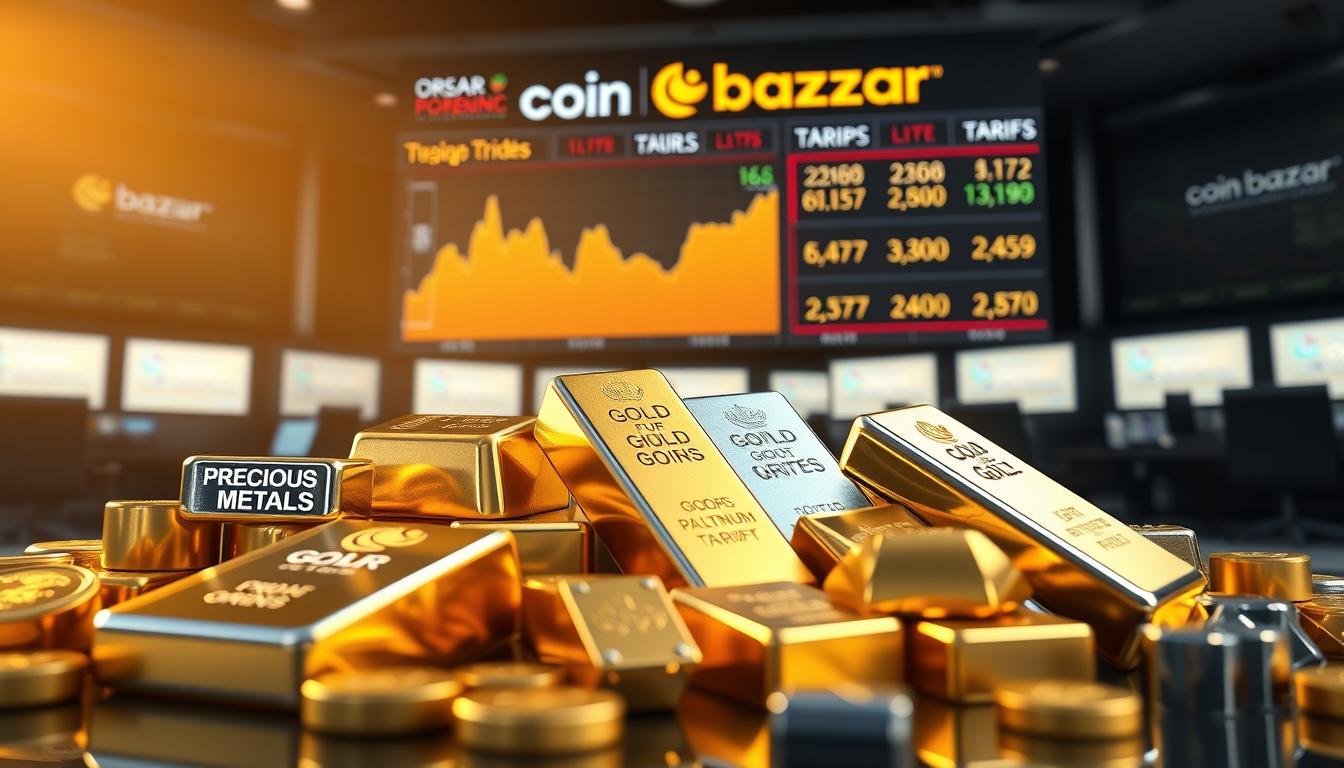
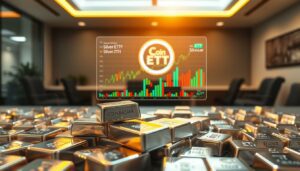

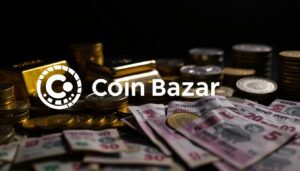


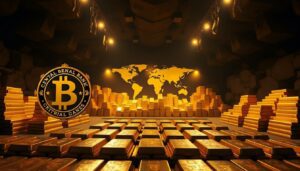


One Response
The link between tariffs and precious metals prices is often overlooked, but your post really brings to light how important these external factors are for market volatility. I think investors will need to stay more informed than ever to navigate 2025’s unpredictable market.